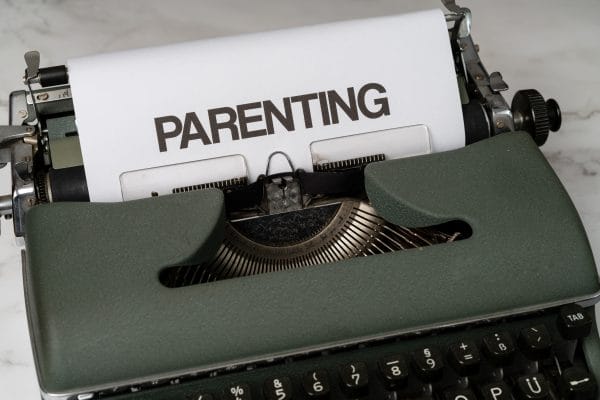Effective Discipline Strategies: Age-Appropriate Discipline Techniques for Toddlers to Teens
Discipline is a fundamental aspect of child-rearing, crucial for fostering respect, self-control, and responsibility in young minds. However, the term “discipline” often conjures images of punishment and conflict. In reality, discipline strategies can be nurturing, supportive, and effective in guiding children toward positive behavior without negativity or harshness.
This article delves into various discipline strategies, emphasizing methods for different age groups, such as toddlers, and settings like the classroom, all while maintaining a conscious approach to discipline.

Understanding Discipline Strategies
![]()
Before we explore specific discipline strategies, it’s important to understand what discipline truly entails. Discipline is not merely about punishing bad behavior; it’s about teaching and guiding children toward making better choices in the future. It involves setting boundaries, communicating expectations, and reinforcing positive behavior.
How to Discipline Your Child: The Basics
Here are some foundational principles to consider when learning how to discipline your child:
- Consistency: Being consistent with rules and consequences helps children understand what is expected of them.
- Clear Communication: Clearly articulate the rules and the reasons behind them so children can understand the cause-and-effect relationship between their actions and the outcomes.
- Positive Reinforcement: Encouraging good behavior with praise or rewards can be more effective than punishing bad behavior.
- Modeling Behavior: Children learn by example. Displaying the behavior you expect from them is a powerful form of teaching.
- Empathy: Understanding and relating to your child’s feelings can help in addressing the root cause of misbehavior.
Discipline Strategies for Toddlers
![]()
Toddlers are at a stage of exploring their autonomy, which often leads to testing boundaries. This can be challenging for parents, but with the right discipline strategies for toddlers, you can guide your little one toward positive behavior.
Establishing Boundaries
For toddlers, understanding limits is essential. Clearly define what is acceptable and what isn’t, and consistently reinforce these boundaries. Use simple language and be patient, as toddlers may need reminders often.
Redirecting Attention
When a toddler is acting out, redirecting their attention to a different, more appropriate activity can prevent a tantrum. This strategy not only stops the negative behavior but also teaches toddlers to find alternative ways to express themselves.
Time-Outs
Time-outs can be effective if used sparingly and properly. A time-out is not a punishment but a chance for the toddler to calm down and reset. Keep time-outs short – generally, one minute per year of age is a good rule of thumb.
Conscious Discipline Strategies
![]()
Conscious discipline is a comprehensive, evidence-based approach that integrates social-emotional learning and discipline. It aims to build a positive school or home culture while fostering self-discipline and proactive problem-solving skills. Here are some key conscious discipline strategies:
- Connection before Correction: Establish a connection with the child before attempting to correct behavior. This helps the child feel safe and understood, making them more receptive to guidance.
- Composure: Adults must remain calm and composed when addressing a child’s behavior. This models self-regulation for the child.
- Empowerment: Give children some control over their world by offering choices within set boundaries. This empowers them to make decisions and learn from the outcomes.
- Assertiveness: Be assertive, not aggressive or passive, when communicating expectations. Assertive communication is clear and respectful, both to the child and the adult.
Classroom Discipline Strategies
![]()
In the classroom, discipline is all about creating an environment conducive to learning for all students. Here are some tried-and-true classroom discipline strategies:
Establishing Clear Rules
At the beginning of the school year, set clear, simple, and achievable rules. Involve students in the rule-making process to give them a sense of ownership and responsibility for their behavior.
Consistent Consequences
Consistency is key in the classroom. When students know what to expect, they’re more likely to follow the rules. Ensure that consequences for misbehavior are fair, consistent, and applied immediately.
Positive Reinforcement
Recognize and reward good behavior as much as possible. This can range from verbal praise to a points system where students can earn rewards. Positive reinforcement encourages students to continue behaving well.
Preventative Measures
Preventing misbehavior is always preferable to dealing with it after the fact. Keep students engaged with interactive lessons, provide clear instructions, and manage transitions smoothly to minimize opportunities for misbehavior.
Case Studies and Statistics
![]()
Research and real-world case studies have demonstrated the effectiveness of positive discipline strategies. For instance, studies have shown that schools implementing conscious discipline strategies have seen reductions in student aggression and disruptions, as well as improvements in academic performance and overall school climate.
According to the American Psychological Association, positive reinforcement is one of the most powerful techniques for shaping or changing behavior. Statistics have also indicated that when children are disciplined using positive methods, they are more likely to develop self-discipline and a better understanding of right and wrong.
Frequently Asked Questions
![]()
What is the best way to discipline my child?
The best way to discipline your child is to use consistent, age-appropriate rules and consequences. Be clear about your expectations and the outcomes of not following them. Use positive reinforcement when they do well, and ensure that any disciplinary action is fair and helps them learn from their mistakes.
How can I discipline my child without yelling?
You can discipline your child without yelling by staying calm and using a firm but gentle voice. Take deep breaths if you feel yourself getting angry. Communicate clearly and assertively, not aggressively, and take a time-out for yourself if needed before addressing your child’s behavior.
Is time-out an effective discipline strategy?
Time-out can be effective for some children if used correctly. It should be implemented in a consistent and predictable manner. The rule of thumb is one minute of time-out per year of the child’s age. Use it as a way for the child to calm down and think about their actions, not just as a punishment.
What should I do if my child throws a tantrum in public?
If your child throws a tantrum in public, stay calm and don’t worry about onlookers. Remove your child from the situation if possible, and wait until they have calmed down before discussing their behavior. Be firm but supportive, and avoid giving in to their demands just to stop the tantrum.
How can I make sure my discipline is consistent?
To ensure consistency, establish clear rules and consequences and stick to them. If you co-parent, make sure both caregivers are on the same page. If a situation arises that isn’t covered by established rules, take the time to decide how to handle it and remember your decision for future reference.
Can I use positive reinforcement as a discipline strategy?
Yes, positive reinforcement is a great discipline strategy. It involves rewarding your child for good behavior to encourage them to continue acting appropriately. Rewards can be verbal praise, stickers, extra playtime, or other small privileges.
What are some alternatives to physical punishment?
Alternatives to physical punishment include time-outs, loss of privileges, natural consequences, and logical consequences. Use these methods to teach your child about the outcomes of their actions and to help them learn self-control and responsibility.
How do I discipline my child for lying?
When disciplining your child for lying, have a conversation about why honesty is important. Discuss the consequences of lying, and ensure any punishment is related to the lie itself. For example, if they lied about doing homework, they might have to do extra learning activities.
How can I teach my child self-discipline?
Teach self-discipline by setting a good example, providing opportunities for your child to make choices, and allowing them to face natural consequences. Praise them for showing self-control and discuss the benefits of being disciplined, such as feeling proud of themselves and earning trust.
Is it okay to take away a favorite toy as a form of punishment?
Taking away a favorite toy can be used as a disciplinary tool if it directly relates to the behavior. For example, if the child misused the toy or didn’t put it away when asked. However, it shouldn’t be taken away for unrelated issues, and the child should know what they can do to earn it back.
Conclusion: Key Takeaways
![]()
Discipline strategies are most effective when they’re consistent, clear, and nurturing. Whether you’re dealing with toddlers or managing a classroom, the goal is the same: to guide children toward self-discipline and good decision-making. By utilizing a mix of boundary-setting, positive reinforcement, and empathy, adults can create an environment where children feel safe, respected, and motivated to behave well. Remember, discipline is not just about correcting misbehavior; it’s about teaching life-long skills for success.





